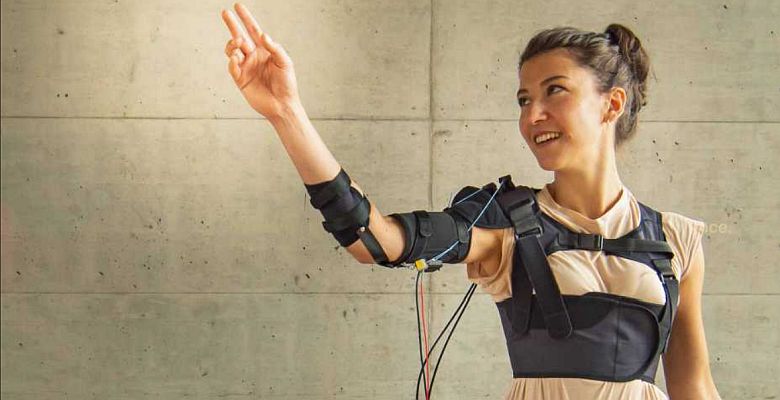A wearable fabric exoskeleton should give people with limited mobility more strength and endurance in the upper body.
Bethlem myopathy is a rare muscle disease in which patients become increasingly weak in their muscles. To compensate for the lack of muscle strength in the arms, they make evasive movements in everyday life, which in turn causes discomfort and tension. There are many good therapy devices in clinics nowadays, but they are often expensive and large. There are fewer technical aids that directly support patients in everyday life and with which they can also train at home. Researchers at the Eidgenössische Technische Hochschule Zürich (ETH) want to close this gap.
As much strength as needed
This idea gave rise to the Myoshirt, a soft, wearable exoskeleton for the upper body. It consists of a kind of vest with cuffs for the upper arms and a small box containing all the technology that is not applied directly to the body. With the help of sensors in the fabric, an intelligent algorithm recognises what kind of movement the wearer wants to make and how much force it requires. A motor then shortens a cable that runs parallel to the muscles in the fabric - a kind of artificial tendon - and thus supports the movement.
The support is in line with the movement performed by the user and can be adjusted to individual preferences. The user is always in control and can override the device at any time.
More endurance
The researchers tested the first prototypes in a study with twelve test persons: ten healthy people, one person with muscle weakness and one person with spinal cord injury. The results are promising: all participants could lift their arms and/or objects much longer thanks to the exoskeleton. The endurance time increased by around a third in healthy participants, by 60% in the participant with muscular weakness and increased threefoldin the participant with spinal cord injury . Their own muscles were less tense and the vast majority of test participants also found the device intuitive to use.
However, the road to a market-ready product is still long. In a next step, the researchers want to test their prototype outside the laboratory in the natural environment of future wearers and use these results to improve the device further. For the device to be invisible and comfortable to wear under clothing, it must also be smaller and lighter. The drive and control unit now has a mass of 4 kg.
In order to obtain a maximum reduced product, the researchers want to continue to focus on one core function: supporting the shoulder when lifting the arms. They are working together with spin-off MyoSwiss, which produces and sells a soft exoskeleton.
Photo: ETH Zurich / Florian Haufe

